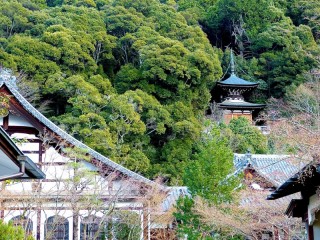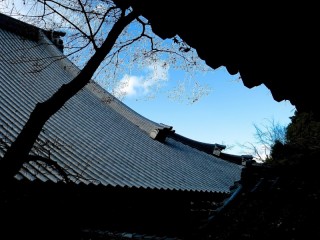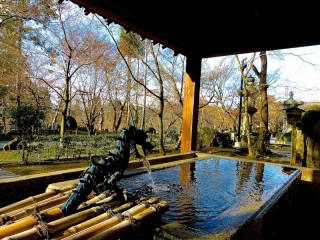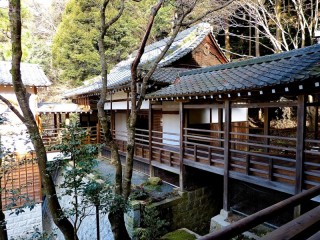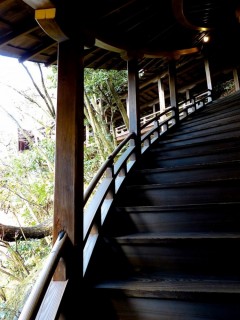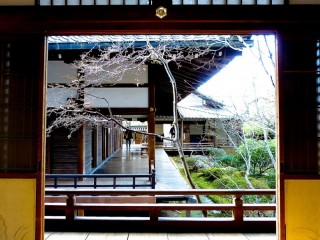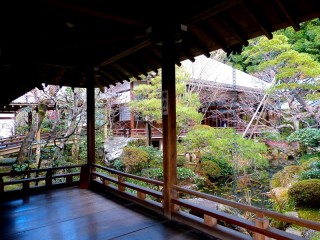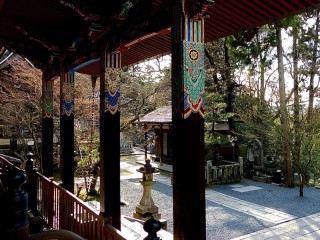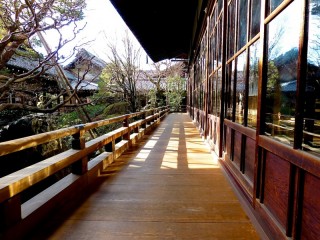Loading
Search
▼ Kyoto Eikan-do Temple
- Category:Shrine and Temple
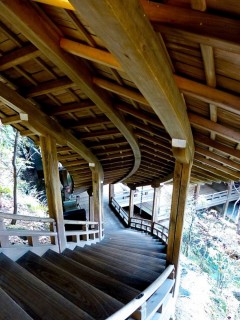
JAPAN TRAVEL
Enjoy These Temples With Amazing Outside Corridors
Eikan-do Temple, just north of Nanzen-ji Temple and at the foot of Mt. Higashiyama, is officially called Zenrin-ji Temple. But today, we call it Eikan-do after Priest Eikan. This temple has fascinating vertical corridors that bring visitors on an excursion up and down and around the entire temple area. As the temple is quite popular because of its beautiful autumn leaves, the long wooden corridors as well as the temple grounds are filled with many visitors in the fall.
So, I would probably recommend going to Eikan-do during another season in order to enjoy the real pleasure of corridor strolling. But before telling you about the corridor route, I'd like to share an interesting story with you about Priest Eikan.
Priest Eikan (1033-1111)
Eikan became a priest at Zenrin-ji (Eikan-do) Temple when he was 11-year-old. He then entered Nara’s Todai-ji Temple (the most advanced academic monastery in Japan) to study various Buddhist doctrines, all of which he completely mastered. But when he was 30, he began to think seriously about how to care for the poor and the weak. And so he leaned towards the worship of the compassionate Amitabha Buddha. Eventually he decided to leave Todai-ji Temple and came back here to Zenrin-ji Temple for this purpose.
At that time he was entrusted with the gift of an Amitabha Buddha statue by some key priests at Todai-ji Temple. However, on the way back, some other less appreciative priests from Todai-ji Temple followed Eikan and tried to get back the statue from him. But the statue stuck tightly to his back and would not be separated. The pursuers finally gave up and returned.
Priest Eikan (1033-1111)
Eikan became a priest at Zenrin-ji (Eikan-do) Temple when he was 11-year-old. He then entered Nara’s Todai-ji Temple (the most advanced academic monastery in Japan) to study various Buddhist doctrines, all of which he completely mastered. But when he was 30, he began to think seriously about how to care for the poor and the weak. And so he leaned towards the worship of the compassionate Amitabha Buddha. Eventually he decided to leave Todai-ji Temple and came back here to Zenrin-ji Temple for this purpose.
At that time he was entrusted with the gift of an Amitabha Buddha statue by some key priests at Todai-ji Temple. However, on the way back, some other less appreciative priests from Todai-ji Temple followed Eikan and tried to get back the statue from him. But the statue stuck tightly to his back and would not be separated. The pursuers finally gave up and returned.
Ten years later, early in a morning in February, he was chanting a prayer while walking around the same statute. Suddenly someone was walking in front of him, chanting. He looked at the person. And looked at the person again. And realized that it was the Amitabha Buddha! Astonished at what was happening, Eikan stopped walking. Then the Amitabha Buddha looked back over his shoulder at him and admonished him with an affectionate: “Keep up, Eikan!” Eikan earnestly prayed that Amitabha would remain in that position. And so Amitabha has kept looking back for more than 900 years! (see Photo No.12)
Strolling Route (See video here)
After you enter the Chumon Gate, turn right and soon you’ll find a building (Dai-gen-kan) on the left. This is the entrance to the corridor route. First, the corridor goes around an inner garden and then through halls where the worship of some lovely Buddha statues takes place.
Strolling Route (See video here)
After you enter the Chumon Gate, turn right and soon you’ll find a building (Dai-gen-kan) on the left. This is the entrance to the corridor route. First, the corridor goes around an inner garden and then through halls where the worship of some lovely Buddha statues takes place.
Walk slowly, feel the silence, and enjoy the touch of the smooth wooden planks on your feet. It is very comfortable. While passing through the corridors, you might notice an interesting thing: Because the temple stands on a hillside, it feels like a maze, with buildings and floors and corridors going this way and that way in every direction. As you look around, you can see people in the distance above you or below you. This might be similar to what we experience as children in school and observe older students from afar, knowing that we too will eventually be in their shoes.
At the back of Miei-do Hall, there is a water device, called Suikinkutsu. It makes a faint and pleasant tone after we drip water onto a basin beneath some small stones. Here, the corridor divides in two directions: An interesting curved staircase (leading up to the left) or normal straight stairs leading toward Amida-do Hall, on the right.
Curved staircase, Garyu-ro
Garyu-ro means 'corridor resembling the form of a sleeping dragon'. The stairs curve gently, and the combination of the ceiling and the stairs look like bellows.
Curved staircase, Garyu-ro
Garyu-ro means 'corridor resembling the form of a sleeping dragon'. The stairs curve gently, and the combination of the ceiling and the stairs look like bellows.
Walking up and down these open, roofed, wooden stairs, you might feel as if you are going through the stomach of a big dragon. You will also have a fine view of the nearby woods, and when you reach the top, a view of distant mountains and the entire precinct of the temple spread out below you. Surprisingly, this corridor was built without nails.
Amida-do Hall (Hall for Amitabha Buddha)
Go up the straight staircase and past a small hall (containing Buddhist memorial tablets). This is Amida-do Hall where Amitabha Buddha talked to Priest Eikan. The Buddha statue stands in the center, looking over his left shoulder at Eikan, and at us.
Amida-do Hall (Hall for Amitabha Buddha)
Go up the straight staircase and past a small hall (containing Buddhist memorial tablets). This is Amida-do Hall where Amitabha Buddha talked to Priest Eikan. The Buddha statue stands in the center, looking over his left shoulder at Eikan, and at us.
About this series
Japan's Heian Period (794-1185) was an age of aristocracy. Their refined taste found its way into the design of temple buildings and gardens. The buildings often had no walls, but instead latticed shutters or sliding doors all around. When the shutters or doors were completely opened, the inside of the rooms became a part of the outside world.
Outside roofed corridors connecting each building were also a place where they could touch nature, enjoy the gardens, and breathe and feel fresh air, yet be protected from rain, snow and strong sunshine. Noblemen really enjoyed the seasonal change of the gardens, and the comfortable touch of the wood of these impressive outside corridors.
The temples covered in this series (see below) were all established in the Heian Period, and are admired for the arrangement of their beautiful corridors. I hope you enjoy them as much as I did!
1 Eikan-do Temple (established in 853): Excursion through a collection of vertical corridors, leading up to higher levels
2 Daikaku-ji Temple (established in 876): Excursion through a labyrinth of long horizontal corridors
3 Ninna-ji Temple (established in 888): Zigzag corridors connecting sand and pond gardens
4 Shoren-in Temple (established in 1150): Horseshoe corridors facing three gardens
1 Eikan-do Temple (established in 853): Excursion through a collection of vertical corridors, leading up to higher levels
2 Daikaku-ji Temple (established in 876): Excursion through a labyrinth of long horizontal corridors
3 Ninna-ji Temple (established in 888): Zigzag corridors connecting sand and pond gardens
4 Shoren-in Temple (established in 1150): Horseshoe corridors facing three gardens
- April 15, 2016
- Comment (0)
- Trackback(0)


